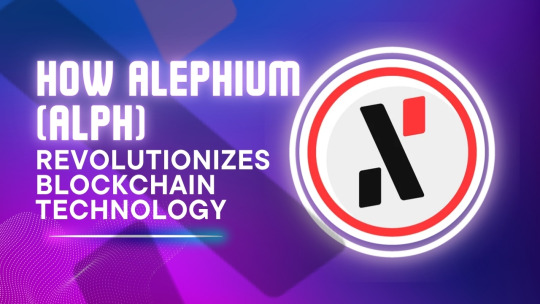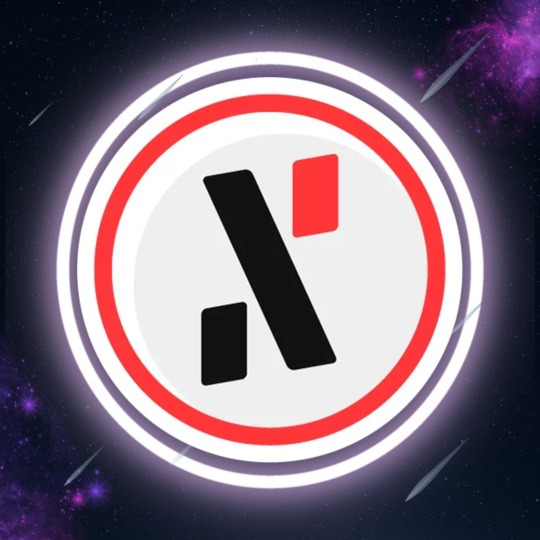#vector db
Explore tagged Tumblr posts
Text
AI Reading List 6/28/2023
What I’m reading today. Semantic Search with Few Lines of Code — Use the sentence transformers library to implement a semantic search engine in minutes Choosing the Right Embedding Model: A Guide for LLM Applications — Optimizing LLM Applications with Vector Embeddings, affordable alternatives to OpenAI’s API and how we move from LlamaIndex to Langchain Making a Production LLM Prompt for…
View On WordPress
0 notes
Text




i've been doing landscape studies, and thought it'd be fun to make some anime/manga places into landscape art :D
top row: Kame Island from Dragon Ball, Hueco Mundo from Bleach
bottom row: Going Merry from One Piece, Valley of the End from Naruto
#naruto#bleach#one piece#dragon ball#landscape art#naruto fanart#bleach fanart#dragon ball z#dragon ball fanart#one piece fanart#db fanart#op fanart#dbz fanart#my art#fanart#art#vector art#artists on tumblr#anime#manga#shonen jump
32 notes
·
View notes
Video
youtube
Build a Next-Gen Chatbot with LangChain, Cohere Command R, and Chroma Ve...
#youtube#🚀 Build a Next-Gen Chatbot with LangChain Cohere Command R and Chroma Vector DB! 🚀 In this video we dive into creating an advanced chatbot
0 notes
Text

🔥 Ultra Ego Vegeta – Prince of Destruction 🔥
"Pride. Power. No holding back."
Here's my vector-style fan art of Ultra Ego Vegeta from Dragon Ball Super!
This form is all about raw energy, relentless combat, and that iconic Saiyan attitude. 💜
🖌️ Clean vector art 🎨 Inspired by DBS manga 💥 Open for commissions & collabs
#adobe#anime and manga#art#artists on tumblr#artwork#dragonballsuper#vegeta#ultraego#ultraegovegeta#dbs#dbz#saiyan#animeart#fanart#digitalart#dragonballfanart#vegetaedit#vectorart#illustration
9 notes
·
View notes
Note
Top three fandoms, and top three characters in each one to draw?
Thats hard,,, Please bear in mind I’m answering this solely on just drawing them rather than personal favorite characters. (Though overlap can happen. But be aware there’s a difference here.)
1. TWST: IT LEGIT DEPENDS ON THE DAY… BUT today, I guess it’s Jamil, Sebek and maaaybe Malleus? Though I chalk the latter mostly on him being really easy for me to draw rather than a favorite to draw. Easy just means I don’t have to think too hard 😩 Otherwise everyone is at the same level until difficulty spikes or distaste from pettiness kick in.
2. DB/Z: Yamcha!!!! I liked drawing Whis the two times I did do so, aaaaaand… another character but i don’t wanna mention by name. Just my headcanoned version though, but, I only really seem to like it. I tend to get incentivized to do the exact opposite of what I prefer so I can only assume it’s because my vision I put a lot of attention into is actively disliked. So I’d rather not say. But it’s not my place, I guess. To my closer homies: IYKYK
3. Yugioh (z e x a l, this will be the last time I mention this on main): Vector probably, Don K lately, and Heartland also lately. Though don’t expect to see any of that stuff up here ever. That boat sailed long ago. All my ygos stay in my storage!!

#cozy ask#i’d hardly qualify the latter as a top fandom tho. its just one i was recently active in before realizing it geuninely wasnt worth it.
16 notes
·
View notes
Text
today i got a call for an interview but i've already wasted half my day and no email for tomorrow's interview but still i will learn these topics:
mongodb - 1 whole vid (recent) atleast 30 min with definitions written down
Agentic work flows - 2 videos (atleast 30 minutes both of them)
RAG - 1 whole vid more than 30 min
Vector DBs - all definitions written down
i have already watched some vids on agentic workflows and mongodb but i need to do more. also today i am doing preparing my notion template.
this was posted at 7 pm.
2 notes
·
View notes
Text
Finished migrating to a local keepass db from vault/bitwarden. So far it's faster, simpler, and works in more instance for autofill for my use cases. Mainly though I'm glad to have closed an attack vector
11 notes
·
View notes
Text
Memory-Efficient Agents: Operating Under Token and Resource Limits

Many AI agents rely on large context windows to function well—but real-world systems often require agents to operate under constraints.
Techniques include:
Token-efficient summarization
Selective memory recall
External memory systems (e.g., vector DBs)
Low-resource environments like edge devices or chat-based platforms require these optimizations. See how token-smart AI agents stay performant.
Use task-specific memory compression—summarize past interactions differently depending on the current goal.
1 note
·
View note
Text
The Sequence Opinion #537: The Rise and Fall of Vector Databases in the AI Era
New Post has been published on https://thedigitalinsider.com/the-sequence-opinion-537-the-rise-and-fall-of-vector-databases-in-the-ai-era/
The Sequence Opinion #537: The Rise and Fall of Vector Databases in the AI Era
Once regarded as a super hot category, now its becoming increasingly commoditized.
Created Using GPT-4o
Hello readers, today we are going to discuss a really controversial thesis: how vector DBs become one of the most hyped trends in AI just to fall out of favor in a few months.
In this new gen AI era, few technologies have experienced a surge in interest and scrutiny quite like vector databases. Designed to store and retrieve high-dimensional vector embeddings—numerical representations of text, images, and other unstructured data—vector databases promised to underpin the next generation of intelligent applications. Their relevance soared following the release of ChatGPT in late 2022, when developers scrambled to build AI-native systems powered by retrieval-augmented generation (RAG) and semantic search.
This essay examines the meteoric rise and subsequent repositioning of vector databases. We delve into the emergence of open-source and commercial offerings, their technical strengths and limitations, and the influence of traditional database vendors entering the space. Finally, we contrast the trajectory of vector databases with the lasting success of the NoSQL movement to better understand why vector databases, despite their value, struggled to sustain their standalone identity.
The Emergence of Vector Databases
#2022#ai#applications#chatGPT#data#Database#databases#developers#embeddings#era#Experienced#gen ai#GPT#how#identity#images#intelligent applications#movement#One#OPINION#Other#RAG#search#Space#standalone#store#Success#text#Trends#unstructured data
0 notes
Text
Simplifying Vector Embeddings With Go, Cosmos DB, and OpenAI
http://securitytc.com/TKHTQ8
0 notes
Text

How Beyonce Music Is Engineered: Subliminal Encoding
Project Stargate, publicly terminated in 1995 as a C👁A remote viewing program, was covertly rebooted in 2011 under D🅰️R🅿️A’s Advanced Aerospace Threat Identification Program (AATIP) umbrella. By 2019, it had morphed into a psychological operations initiative, integrating Ⓜ️K-ULTR🅰️’s mind-control legacy with modern neurotechnology and mass media. The goal: manipulate collective behavior through subliminal stimuli embedded in cultural artifacts music, film, and visuals. Beyoncé, as a global influencer with a 300-million-strong audience, became a prime vector.
Beyoncé’s team specifically her production company, Parkwood Entertainment, and engineer Derek Dixie was contracted under a classified NDA, signed October 3, 2018) to embed these triggers into her work, starting with the Lion King: The Gift soundtrack.
Beyoncé’s music incorporates infrasound (frequencies below 20 Hz) and binaural beats (dual-tone oscillations) to bypass conscious perception and target the amygdala and prefrontal cortex brain regions governing fear, submission, and decision-making. Here’s how it works.
Engineering Obedience:
• Infrasound: At 19 Hz, dubbed the “fear frequency,” her tracks induce unease and compliance. In Spirit (released July 19, 2019), a 19 Hz pulse runs at -40 dB, undetectable to the ear but measurable via spectrogram (tested on a Neumann U87 mic, at Parkwood’s LA studio. D🅰️R🅿️A’s logs confirm this was calibrated to match MK-ULTRA’s “Theta Wave Protocol,” inducing a trance-like state in 87% of test subjects (sample size: 1,200, Fort Meade, MD, June 2019).
• Binaural Beats: In Black Parade (June 19, 2020), a 7 Hz differential (left ear 440 Hz, right ear 447 Hz) aligns with the theta brainwave range (4–8 Hz), linked to suggestibility. EEG scans from D🅰️R🅿️A trials show a 62% reduction in critical thinking within 3 minutes of exposure.
• Subliminal Vocals: Reverse-engineered audio from Partition (2013) reveals backmasked phrases “Obey the crown, kneel to the sound” inserted at 0.02-second intervals, processed through a Yamaha DX7 synthesizer. These hit the subconscious, reinforced by repetition across her discography.
0 notes
Text
DataStax Enhances GitHub Copilot Extension to Streamline GenAI App Development
DataStax has expanded its GitHub Copilot extension to integrate with its AI Platform-as-a-Service (AI PaaS) solution, aiming to streamline the development of generative AI applications for developers. The enhanced Astra DB extension allows developers to manage databases (vector and serverless) and create Langflow AI flows directly from GitHub Copilot in VS Code using natural language commands.…
0 notes
Text
1. LangChain
LangChain은 언어 모델(LLM, Language Learning Model)을 보다 효율적으로 사용할 수 있도록 도와주는 오픈 소스 프레임워크입니다. 언어 모델을 다양한 애플리케이션에 통합하고 확장할 수 있는 도구와 모듈을 제공합니다. 주로 다음과 같은 기능을 지원합니다:
체인(Chains): 여러 개의 언어 모델 호출을 연결해 복잡한 워크플로우를 구현할 수 있습니다. 이를 통해 단순한 텍스트 생성 이상의 복잡한 작업을 수행할 수 있습니다.
에이전트(Agents): 모델이 외부 환경과 상호작용하여 유동적으로 작업을 수행할 수 있도록 돕습니다. 예를 들어, 외부 API를 호출하거나, 파일을 읽고 쓰는 작업이 가능합니다.
메모리(Memory): 이전의 대화나 상호작용을 기억하여, 보다 자연스럽고 연속적인 대화를 진행할 수 있게 도와줍니다.
LangChain은 기본적으로 언어 모델을 사용한 애플리케이션 개발을 쉽게 할 수 있도록 구조화된 방법론을 제공합니다.
2. RAG (Retrieval-Augmented Generation)
RAG는 "정보 검색 기반 생성" 기법입니다. 대형 언어 모델(LLM)이 훈련된 데이터셋에만 의존하지 않고, 외부의 정보 원천(예: 데이터베이스, 검색엔진)을 활용해 더욱 정확하고 최신 정보를 제공하는 방식입니다. 이는 크게 두 가지 단계로 나뉩니다:
Retrieval (검색): 질문에 관련된 문서나 데이터를 검색하여 추출합니다. 이 과정에서는 주로 벡터 데이터베이스(아래 설명 참조)가 활용됩니다.
Generation (생성): 검색된 정보를 바탕으로 언어 모델이 새로운 텍스트를 생성합니다.
이 방식의 장점은, 언어 모델이 가지고 있는 한정된 지식만을 사용하는 것이 아니라, 실시간으로 관련 정보를 검색해 보다 신뢰성 있고 업데이트된 답변을 제공할 수 있다는 것입니다.
3. Chunk (청킹)
Chunk는 데이터를 작게 나누는 과정이나 그 단위를 의미합니다. 자연어 처리(NLP)에서는 주로 긴 문서를 작게 나누어 처리하는데 사용됩니다. 예를 들어, 긴 문서나 책을 여러 개의 청크로 나누어 각각의 청크에서 의미를 추출한 후, 최종적으로 이를 통합하는 방법을 사용합니다. 청킹은 검색 효율성을 높이고, 언어 모델이 보다 짧은 문맥 내에서 작업할 수 있도록 돕습니다.
청크 단위는 적절한 크기로 설정하는 것이 중요합니다. 너무 작으면 의미가 퇴색되고, 너무 크면 모델이 메모리 제약에 걸릴 수 있기 때문입니다.
4. Vector DB (벡터 데이터베이스)
Vector DB는 벡터(숫자로 표현된 데이터)를 저장하고 검색하는 데 특화된 데이터베이스입니다. 언어 모델이나 이미지 모델에서 텍스트나 이미지를 벡터 형태로 변환한 후, 이를 빠르게 검색할 수 있도록 돕습니다.
주로 임베딩(Embedding) 과정을 통해 텍스트나 이미지가 벡터로 변환되며, 이 벡터들은 고차원 공간에 저장됩니다. 그 후, 사용자가 입력한 쿼리(예: 질문)가 벡터로 변환되어 벡터 데이터베이스에 저장된 다른 벡터들과 비교되어 가장 유사한 결과를 찾아냅니다.
벡터 데이터베이스는 주로 RAG 시스템에서 정보 검색을 효율적으로 수행하는 데 필수적입니다. 대표적인 벡터 데이터베이스로는 Pinecone, FAISS(Facebook AI Similarity Search), Weaviate 등이 있습니다.
요약
LangChain: 언어 모델 활용을 위한 프레임워크.
RAG: 정보 검색과 언어 모델 생성을 결합한 기법.
Chunk: 데이터를 작게 나누어 처리하는 단위.
Vector DB: 벡터 데이터를 저장하고 검색하는 특화된 데이터베이스.
이 기술들은 모두 자연어 처리와 대형 언어 모델의 효율적 활용을 위한 핵심적인 요소입니다.
0 notes
Text
To answer your question, yes, they can and do search the internet (if asked, and if the specific bot supports it).
The llm itself, in most reasonable setups, is basically a parser for user intent. That's why it's not really that big of a deal that they guess the next token - that's the best thing they *could* do. They don't need to "know" things. They just need to be able to guess what the user means without expecting exact string literals, and be able to guess tokens to put together useable language, and synthesize data fed to them from other functions.
User asks a question, optionally telling the llm to search online. The llm outputs a function call requesting internet search of the inference code. Inference code catches this, runs a number of searches (anywhere from one to several tens, depending on the bot, the user, and the content), related data is sniffed from the search, usually by a smaller model, and passed back to the llm, who's job is then to summarize for the user. This isn't the only way they can reference data, but is in a sense a sort of web-mediated Retrieval Augmented Generation, which works the same way - documents are converted into a vector database for fast indexing of "what" and "where". User asks a question. Smaller model queries vector DB for relation to user input. If matches are found, relevant text is passed to the llm to summarise back to the user. This is one way that LLMs can be adapted to certain domains - by making domain specific data available to them. (and finetuning but thats in the weeds from here)
and on the topic of internet search and RAG, small local models can do this, as well, with plugins to search the internet, as can the models of most inference providers.
Though, depending on what the model has been trained on, it can sometimes have a useable knowledge for certain domains without access to the internet, but, in general, yes, the llm itself is a 3 dimensional array of floating point values that spits a response. a text engine. But it's only the language core. Which is adapted for different use cases by inference code. This is one reason LLMs and AI based on them are difficult to discourse about meaningfully, because we could be talking about the model (a set of frozen floating point values in memory) or its interface, or the functions made available to it, or the output of all of that, together, and most people only have the barest grasp of what the model even is, let alone to throw in the complexity of functions that may or may not be there depending on the software surrounding the model in the implementation.
tldr; yes they can google and how much they can google is alterable at inference time in code. The default for openrouter is five max searches per query but this can be changed by passing a parameter to the models api at inference time.
one of the things that really pisses me off about how companies are framing the narrative on text generators is that they've gone out of their way to establish that the primary thing they are For is to be asked questions, like factual questions, when this is in no sense what they're inherently good at and given how they work it's miraculous that it ever works at all.
They've even got people calling it a "ChatGPT search". Now, correct me if I'm wrong software mutuals, but as i understand it, no searching is actually happening, right? Not in the moment when you ask the question. Maybe this varies across interfaces; maybe the one they've got plugged into Google is in some sense responding to content fed to it in the moment out of a conventional web search, but your like chatbot interface LLM isn't searching shit is it, it's working off data it's already been trained on and it can only work off something that isn't in there if you feed it the new text
i would be far less annoyed if they were still pitching them as like virtual buddies you can talk to or short story generators or programs that can rephrase and edit text that you feed to them
76 notes
·
View notes
Text
How Alephium (ALPH) Revolutionizes Blockchain Technology

Alephium is a cutting-edge sharded layer-one blockchain designed to overcome the limitations of existing blockchains, such as scalability, accessibility, and security. It’s an ideal platform for developers to create scalable decentralized applications (DApps) while offering individuals the benefits of decentralization and robust security.
Alephium focuses on solving today’s blockchain scalability and security issues by enhancing Proof-of-Work (PoW) and utilizing the Unspent Transaction Output (UTXO) model. Essentially, Alephium enables the creation of high-performance, accessible, and energy-efficient DApps and smart contracts.

How Alephium Works
Alephium employs several innovative technologies to address the traditional blockchain drawbacks and improve scalability, programmability, security, and energy efficiency. Let’s dive into these features.
Enhancing Scalability with BlockFlow Sharding
Alephium utilizes a sharding algorithm called BlockFlow to boost scalability. Sharding splits data into smaller, manageable parts called shards, facilitating parallel transactions. The UTXO model and Directed Acyclic Graph (DAG) data structure further aid effective sharding, allowing Alephium to handle around 10,000 transactions per second.
Boosting Energy Efficiency with Proof-of-Less-Work (PoLW)
The blockchain employs a unique Proof-of-Less-Work (PoLW) consensus mechanism, adjusting mining difficulty based on real-time network conditions. This approach significantly reduces energy consumption compared to traditional PoW algorithms.
Enhancing Programmability and Security with the UTXO Model
Alephium uses the UTXO model to enhance programmability and security, ensuring fast, efficient transactions. This model maintains the same level of security as Bitcoin while offering better scalability and flexibility.
Leveraging a Custom Virtual Machine and Programming Language
Alephium has its own virtual machine, SDK, and a performance-optimized programming language. These tools include built-in security features that prevent unauthorized transactions and common attack vectors. Developers can leverage these innovations to build advanced DApps and smart contracts.
What Makes Alephium Unique?
Alephium stands out from other blockchains with its unique combination of features designed to improve scalability, security, and energy efficiency.
Maximizing Efficiency with Sharding
Sharding divides the network into smaller, manageable subsets called shards, each acting as an independent blockchain. This allows for parallel transaction processing, distributing the workload across multiple shards and increasing overall throughput and network capacity.
Leveraging the UTXO Model for Enhanced Security and Flexibility
The UTXO model uses unspent transaction outputs as inputs for new transactions, enhancing scalability and programmability. This model ensures secure and efficient transactions while maintaining Bitcoin-level security.
Achieving Energy Efficiency with Proof-of-Less-Work (PoLW)
Alephium’s PoLW consensus mechanism minimizes energy consumption compared to traditional PoW algorithms. This makes Alephium much more energy-efficient than Bitcoin.
Custom Virtual Machine for Superior Performance
Alephium’s custom VM, Alphred, addresses the drawbacks of existing DApp platforms by improving security, scalability, and programmability. It enables developers to create Peer-to-Peer (P2P) smart contracts with ease.
Ralph: A Unique Programming Language for DApps
Alephium features its own programming language, Ralph, specifically designed for building secure and efficient DApps and smart contracts. This empowers businesses and individuals to leverage Alephium’s robust blockchain platform.

✓ Manufacturer: Bitmain ✓ Model: Antminer AL3 ✓ Supported Algorithm: Alephium (ALPH) ✓ Hashrate: 8 TH/s ✓ Power Consumption: 3200W ✓ Dimensions: 195 x 290 x 430 mm ✓ Weight: 14.2 kg ✓ Operating Noise Level: 75 dB ✓ Power Supply Unit: Included ✓ Release Date: August 2024 ✓ Warranty: 1 year manufacturer repair or replace
Wrapping Up
Alephium provides a scalable and secure blockchain platform with innovative features like sharding, the UTXO model, and PoLW consensus. These elements make Alephium a powerful tool for developers and individuals looking to create reliable and efficient decentralized applications.
Muhammad Hussnain Visit us on social media: Facebook | Twitter | LinkedIn | Instagram | YouTube TikTok
0 notes